Painting with Heat: Artist Uses FLIR Cameras to Make and Display His Heated Thermal Canvas
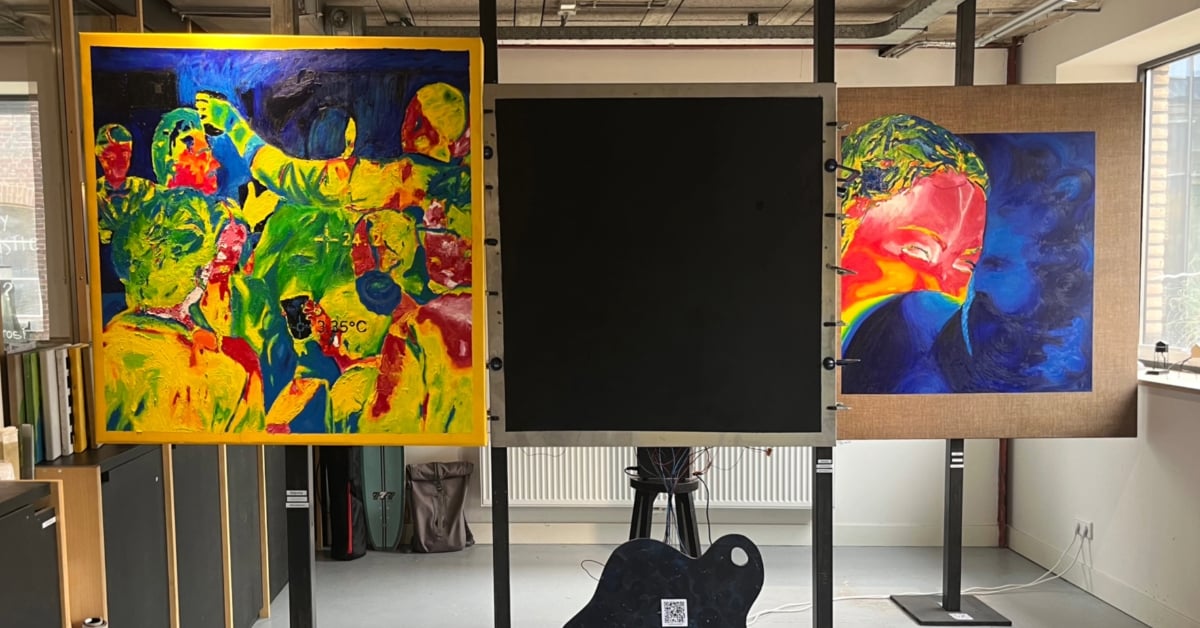
Thermal imaging often marvels its users with the ability to turn the invisible into the visible. Thermal imaging cameras record temperature data and turn that data into images that we can easily interpret. But what if we could interact with that data beyond simply looking at it? Artist and scientist Marton Mogyorósi is answering that question by providing his audience a more hands on experience with his latest exhibit, “Hidden Wavelength: Contemporary Scenes in Infrared”.
Márton Mogyorósi is a plasma material engineer and researcher currently based in Eindhoven, Netherlands. But when he’s not in the lab, Mogyorósi is a multimedia artist who combines science with the visual arts—sharing his love for both while also highlighting technology that he believes needs more attention. “I was a little frustrated by the fact that we have these wonderful technological advancements but there are not many ways to actually show them to the public and make it into an interactive experience where people can be inspired,” Mogyorósi explains.
Mogyorósi’s thermal artwork received a wide audience in October 2024 when he participated in Dutch Design Week, a nine-day design festival in the Netherlands. His exhibit, “Hidden Wavelength,” featured thermal images Mogyorósi captured and rendered on not only traditional oil and canvas, but also a heated steel board that the audience could view through a FLIR T1020 thermal camera.
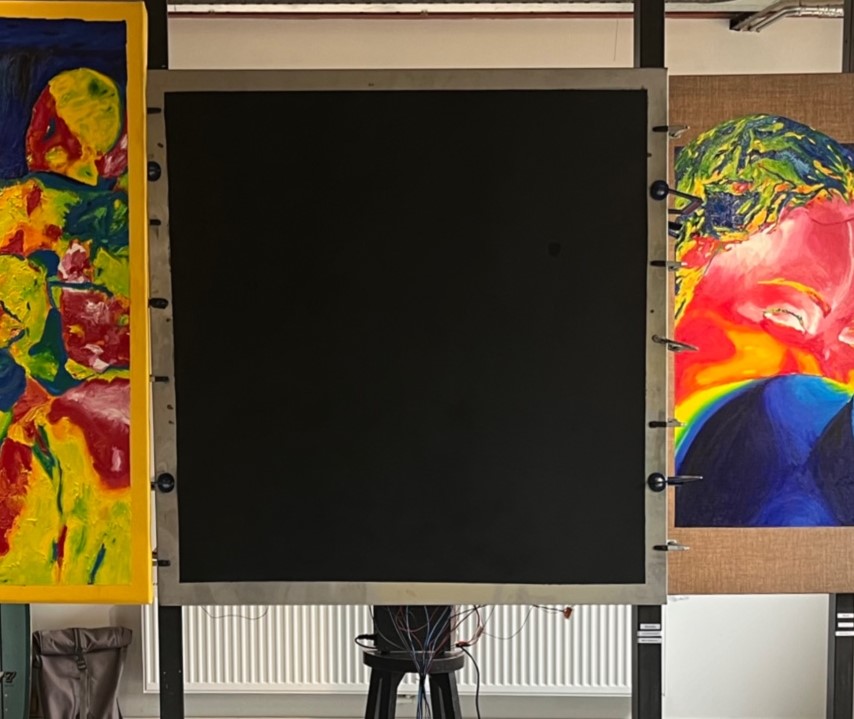
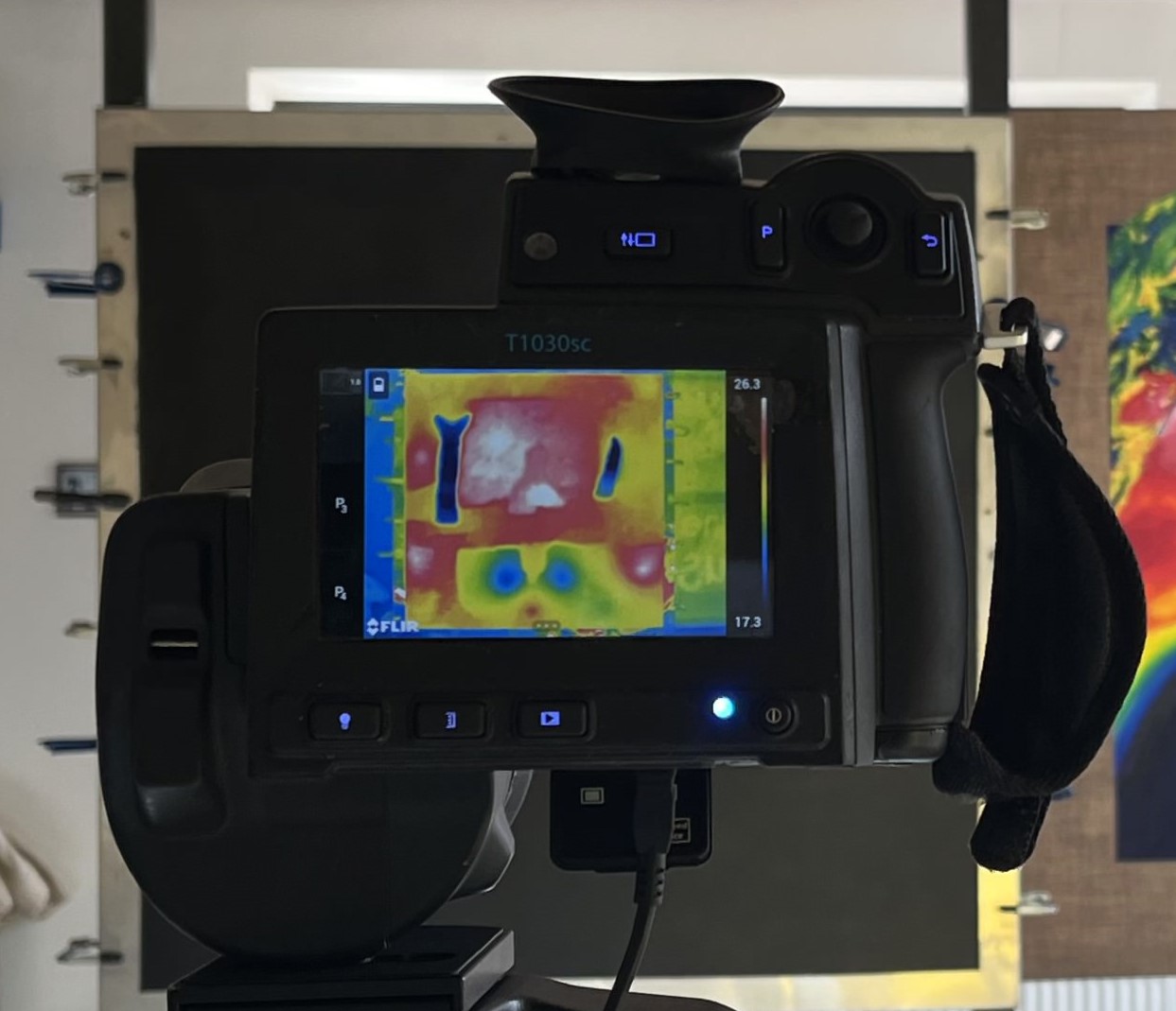
While the canvas appears to be a black slate, thermal imaging reveals the hidden image.
Mogyorósi created this thermal canvas by attaching heated copper plates and cooling fans to the back of the steel board, allowing him to “paint” with temperatures. Audiences could even touch the canvas to feel the heated image, experiencing the scene with another one of their senses.
“We unfortunately have a limited visual range, so you can only see individual colors from blue to red right?” Mogyorósi says. “However, there are more ranges of light that we can experience, and this was a great way to make this into something that can really warm people’s hands and create those ideas.”
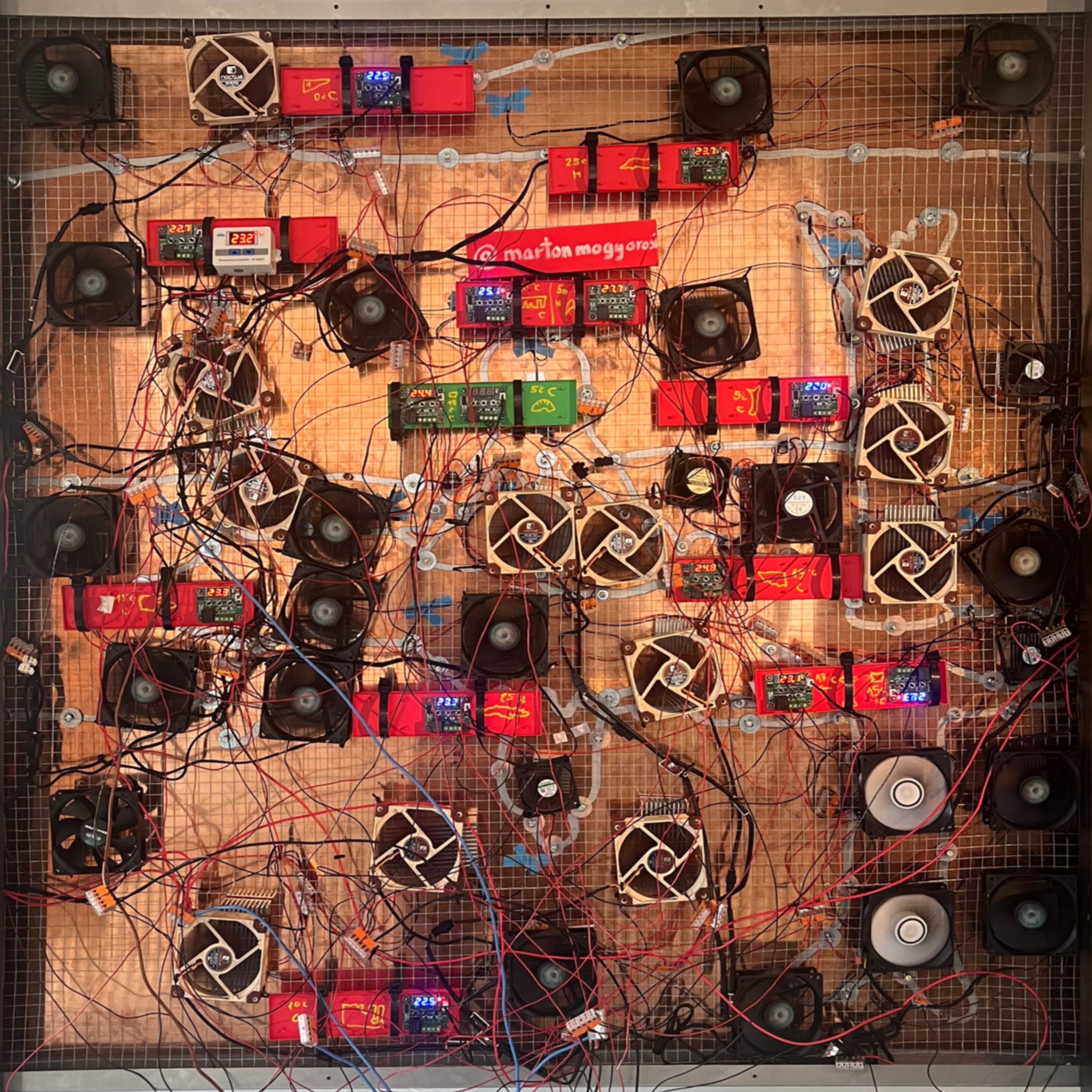
The image is created by well-placed copper plates that heat certain spots while fans cool other areas of the canvas down.
Viewers of “Hidden Wavelength” are treated to vibrant thermal images that capture the “heat of Brazil” as Mogyorósi puts it: scenes the artist captured of festivals, friends, and nightlife across Brazil using FLIR T1020 and a FLIR ONE® Edge Pro smartphone camera. The image displayed on the heated steel board captures a moment where someone ran through a fountain to climb on top of a statue. “It was very, very fun because you could see how he was running through the water, the body reflecting, and of course, it was a quite cold experience,” Mogyorósi says.
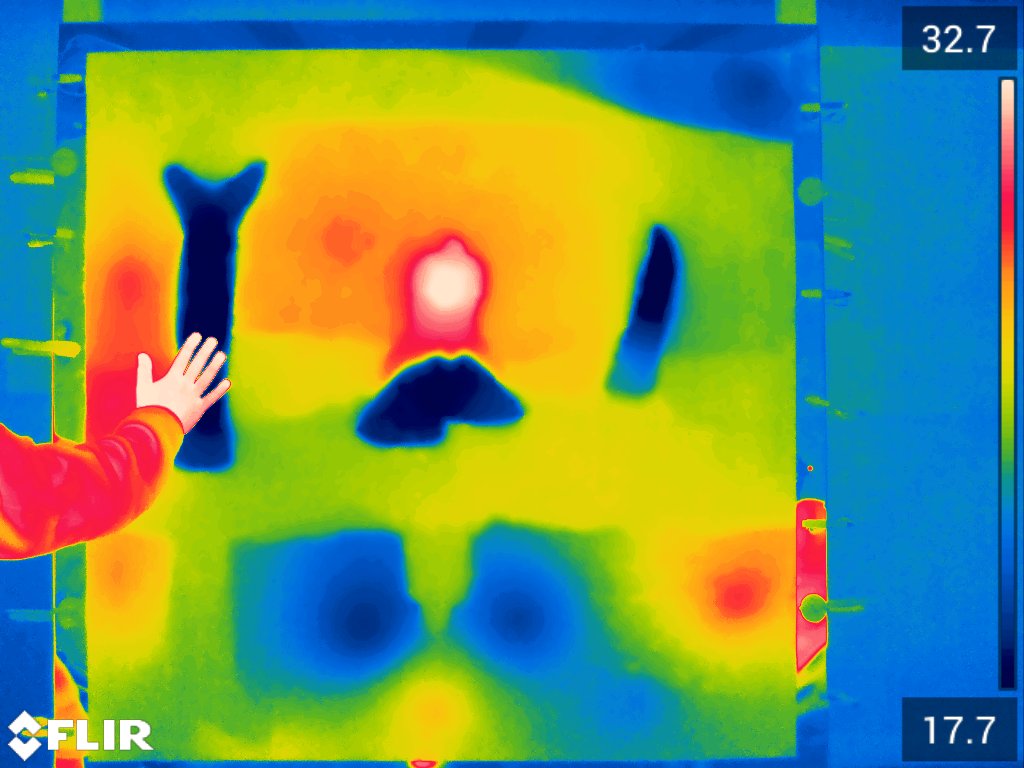
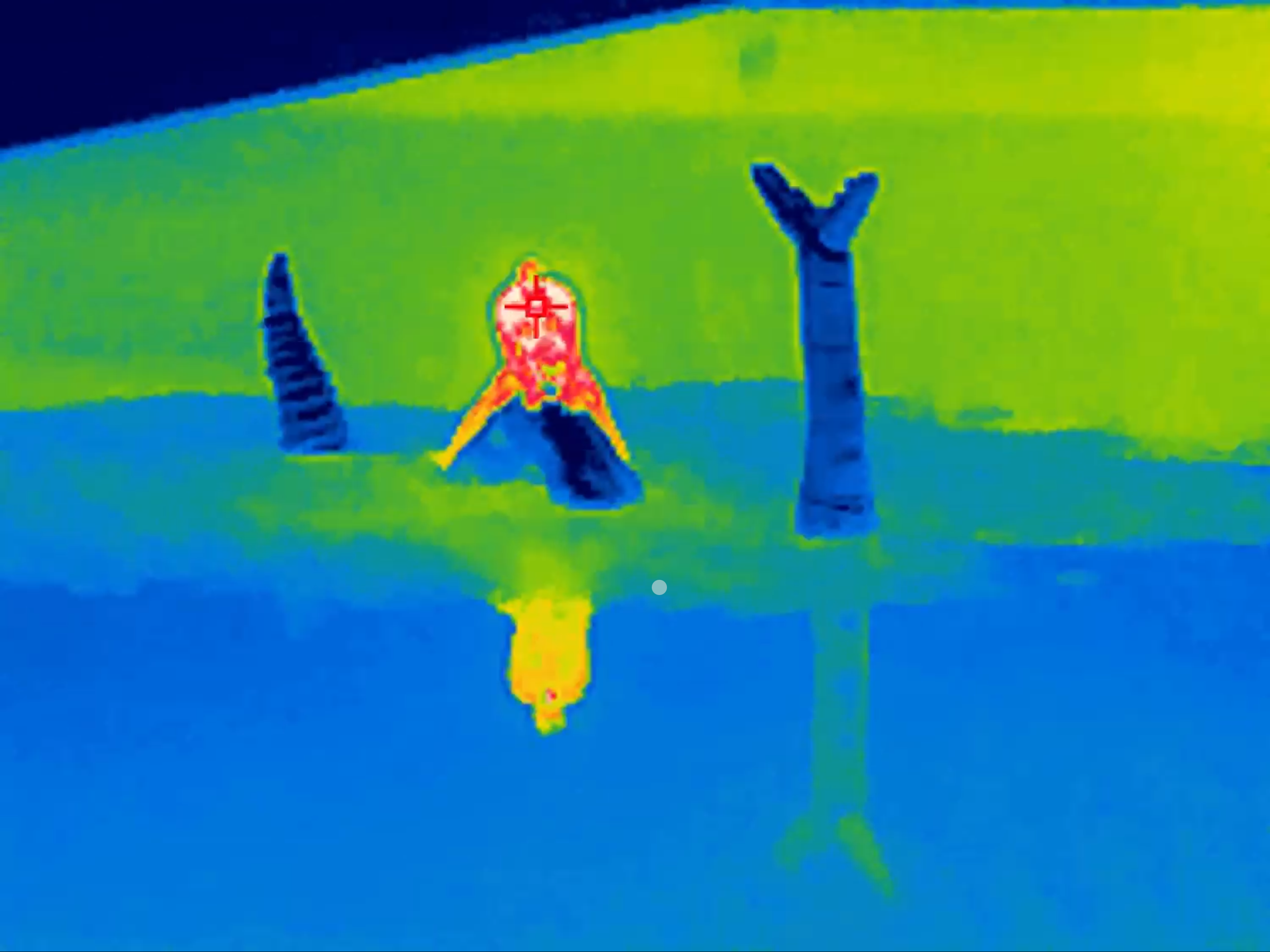
Mogyorósi’s heated canvas (left) and the original thermal image that was recreated (right)
The artist also recalled a moment from his exhibit when a visually impaired vistior was still able to experience the piece thanks to the thermal component. “There was a moment when she understood where the shapes were and what they represented, then I told her the story of the actual image and she said, ‘Oh yeah, I can actually feel the little human figure here.’ We started to talk about amazing it would be if you could create a starry night with this technique and could feel the coldness of space and the warmth of the stars and the moon swirling around. That was very fun.”
When discussing thermal imaging’s role in his work, Mogyorósi speaks to the humbling nature of the technology when compared with our own natural senses. “I really like the fact that thermal images are showing an aspect of the world that is quite humbling,” the artist says. “We don’t have a complete understanding of the reality around us with the senses we are given, we can only see a very limited spectrum of light.”
He continues, “Thermal cameras are a bit of a symbol for the limited perception we have and that we are capable of feeling heat. It’s nice to have a visualization of something that is otherwise more of a feeling. This is where we see that the technology we are inventing is pushing the boundaries of humanity further and with that we can have completely new conversations.”
To learn more about “Hidden Wavelength” and see more of Márton Mogyorósi’s work, you can find his website here.
